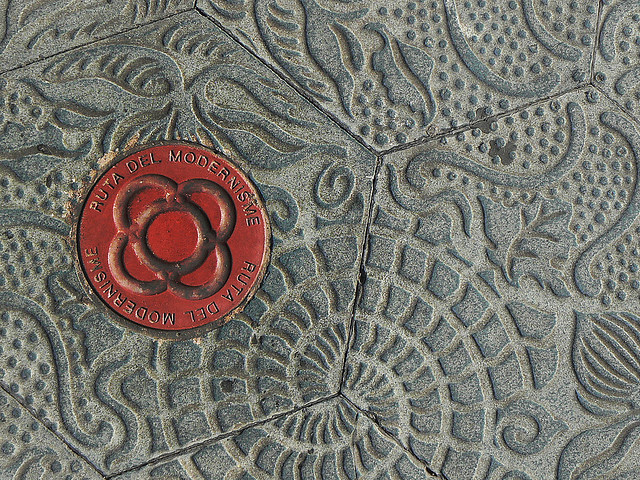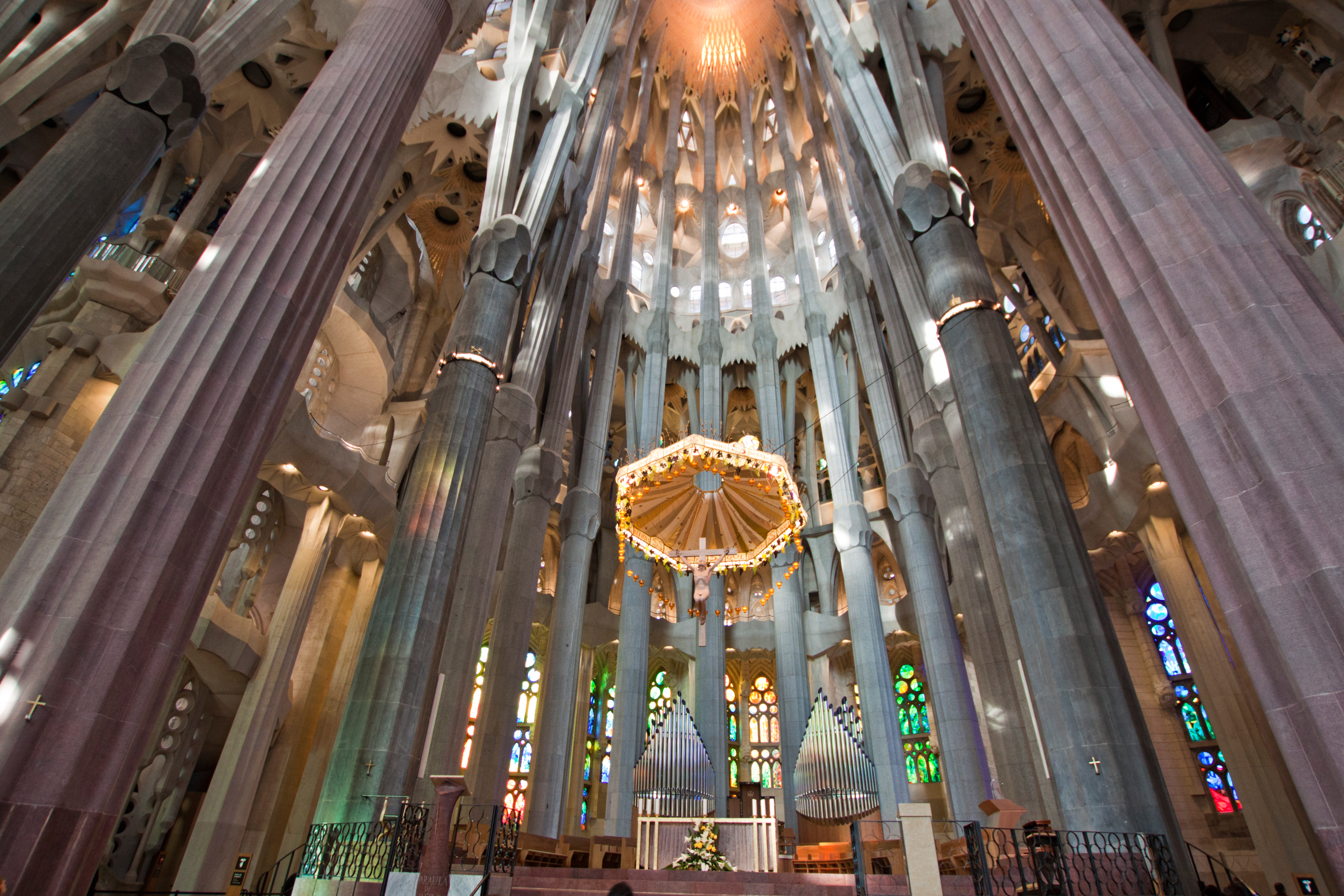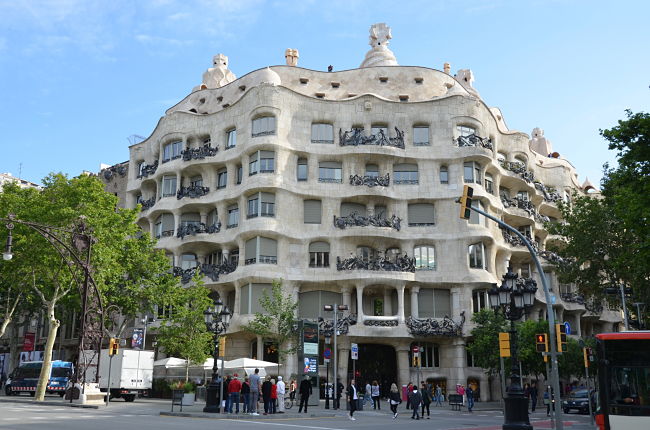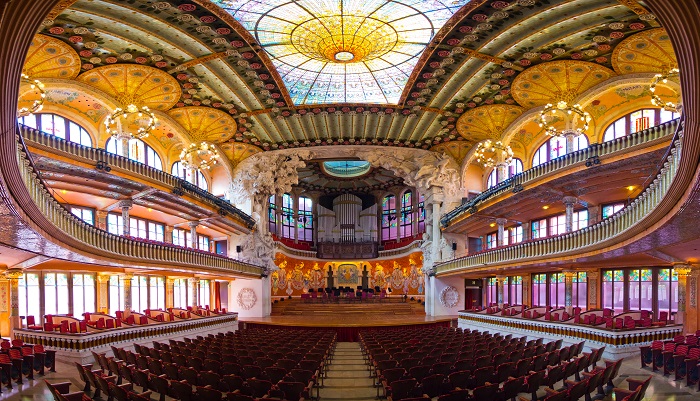Modernisme, also known as Catalan modernism, is a movement whose main expression was the architecture, but also other arts and literature were involved.
Although Modernisme was part of a general trend that emerged in Europe around the turn of the 20th century, in Catalonia the trend acquired its own unique personality. Modernisme became especially important in Barcelona, in the context of a spectacular urban and industrial development.
The architects of Catalan modernism created a variety of magnificent buildings for the bourgeoisie of that period, with a style never seen before. Names like Puig i Cadafalch, Doménech i Montaner and the worldwide famous Antoni Gaudí, among others, were instrumental in Barcelona’s transformation into the role the city has today as one of the most visited cities in the world.

Modernisme Route signs
What is the Modernisme Route?
The Barcelona Modernist Route is an itinerary that takes you through the Barcelona of the architects who made this city the world capital of Modernisme.
This Route, which can be done on foot or by bike, enables you to get to know impressive well known buildings that became a symbol of the city, but also includes a lot of not such known everyday buildings, such as chemists’, shops, lampposts and benches.
In addition, you can follow the route with the aid of signs on the ground that are part of the very urban landscape of the city. These are small red paving stones set into the pavement that mark out the main sections of the route.
There are 120 works in this route in all, which show that Modernisme is a very important part of this city. However, we have chosen just our favourite modernist gems of this route:
Recinto Modernista de Sant Pau
This amazing facility designed by Lluís Domènech i Montaner was for many years the Hospital of Santa Creu i San Pau, and has been declared World Heritage Sites by UNESCO. Take a walk through its gardens and remember that you can access the building for free on the first Sunday every month.

Recinto Modernista Sant Pau
Sagrada Familia
Sagrada Familia Basilica is considered Gaudí’s masterpiece and it is one of the most visited monuments in the world, due to its incomparable beauty. Has been predicted that the construction will be finished around 2026. If you are a truly Sagrada Familia lover, don’t miss our post about The Sagrada Familia and other works of Gaudí.

Sagrada Familia
Quadrat d’Or (Golden Square)
The Quadrat d’Or, or Golden Square in English, is the part of the Eixample located around the Passeig de Gràcia. Keep your eyes peeled as you walk around this area, as you’ll find so many amazing modernist buildings with surprising architecture. The Quadrat d’Or is considered an open-air museum and among the most outstanding buildings you will find: Casa de les Punxes, Casa Lleó i Morera, Casa Amatller, Casa Batlló, La Pedrera or Casa Milà, Casa Calvet…

La Pedrera
Palau de la Musica Catalana
In the old town, Ciutat Vella, there is the incomparable Palau de la Musica, the only concert hall in the world to be declared a UNESCO World Heritage Site. It was designed by the architect Domènech i Montaner as the home of the Orfeó Català choir. The Palau is one of the most iconic examples of Catalonia’s architectural and musical heritage.

Palau de la Musica
If you are planning a trip to discover Barcelona’s Modernist Route, remember to have a look at our modern Aspasios Boutique Apartments in the city centre of Barcelona.
Comments are closed here.